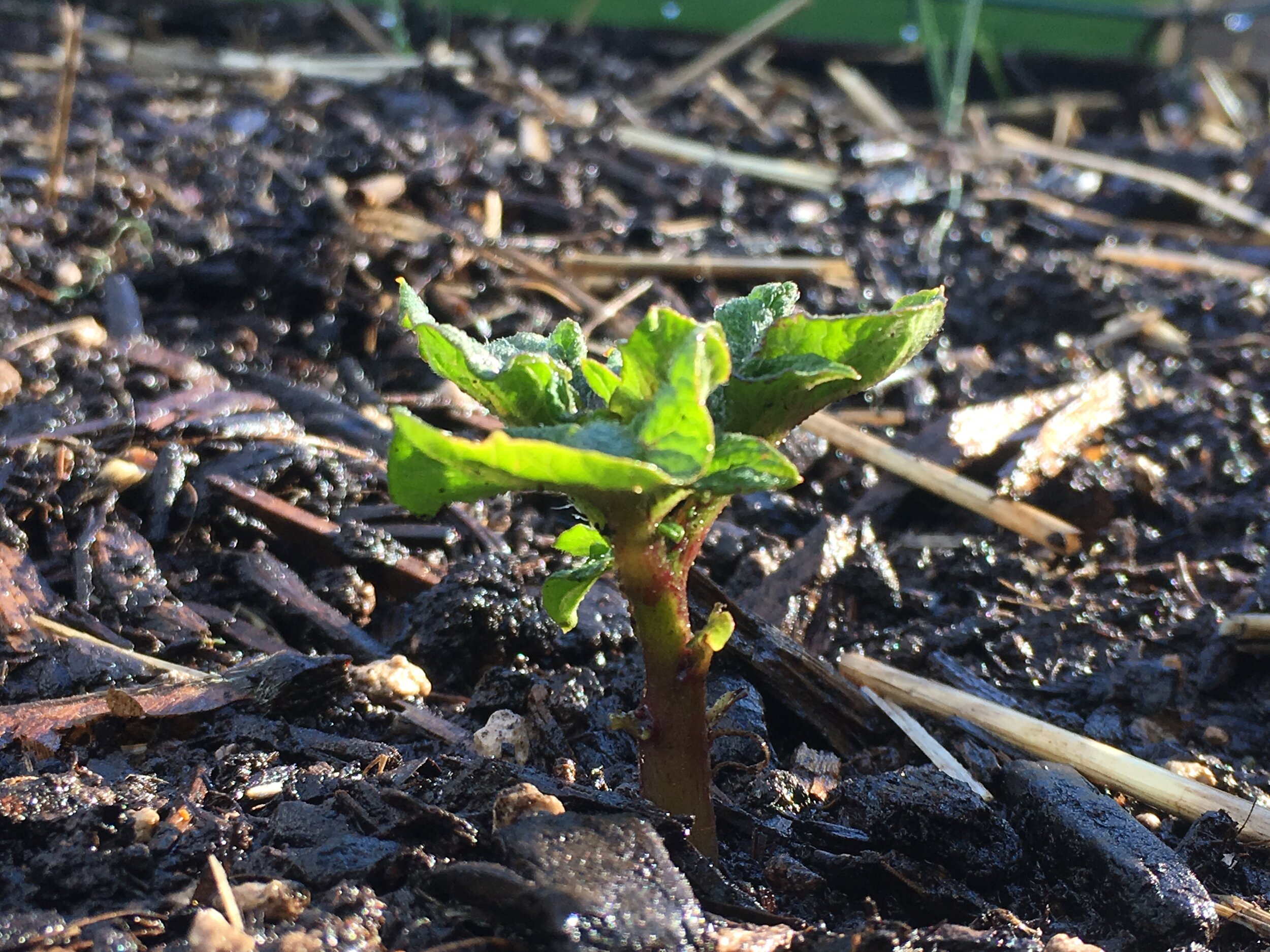“Bee space” refers to the width of crawl space between the frames of a honeybee hive. Three eighths of an inch is the ideal width. Any wider than a quarter inch, and bees will build more comb to fill the space. If it’s too narrow, they won’t be able to access their precious honey, brood, or pollen storage. We can’t humanly imagine what sheltering in place with forty thousand roommates would feel like, nor could we tolerate crawling through spaces only barely wider than our bodies… but bees have systems, routines and communication methods to smooth their household interactions in those tight spaces. In your own world, what are you building up, and what feels like walls squeezing too tight? To move through difficult situations, it’s sometimes helpful to establish systems, routines, and communication methods just like a honeybee colony. A routine I love is watering tiny baby sprouts in the early morning, and after dinner. I’m watching them lift their little green wings every day. Keeps me an optimist.
Thank you a million times over, APT: your generous funds were poured into the addition of our new honeybee residents! Maybe one day soon they’ll pour back into our open jars in the form of delicious gold. For now, I’m delighted to watch the bees build and explore and expand!
I spent last week preparing the bee’s space. Tom helped me dig a hole and plop a stump into it, from our big pile of stumps. The next day I raised another stump, five paces west. What a beautiful repurposing of stumps to podiums for the queens’ colonies, no? Steve wanted to use a discarded set of legs to furnish a small table for them. The table surface is ideal for when I go into the hives and need tools within arms reach.
On Saturday, I drove to NE Portland to pick up the new friends. They were in what’s called a “nuc”: a cardboard box, with five frames of honey and brood (larvae) nearly filled, and the entrance plugged shut. I brought them to campus, and set them carefully on the stumps. It was important to orient the nuc boxes exactly how I wanted to orient the hives, because the bees would immediately establish a memory of the entrance height and location upon first flight. I unplugged their entrance and watched them tumble out clumsily at first, hover around their new space, and then venture into the orchard!
On Sunday, I returned to transfer them into hives. There’s a beekeeper saying that goes like this, “slow is smooth, and smooth is fast.” With utmost patience and intention, I murmured sweet encouragement to the bees as I lifted the lid. There they were, each one with a job to do on a Sunny Sunday afternoon. I gently blew my breath along the tops of the frames, and watched them shudder away from the breeze, and away from where I needed to pinch and lift the frame. I went slow, so the bees could see my hands coming, or feel the gentle nudge, and they moved away. I lifted frame after frame, slowly and carefully so as not to squish or “roll” any of the bees. Some were heavy with honey, others lighter with capped brood comb. I met one of the queens! I practically squealed when I spotted her, and begged Ella to come just a little closer to take a photo. Can you see her?
The hives are tucked along the meadow’s northern treeline, looking across tall grass toward the orchard. And my, the colonies are vigorous! All these sunny days have allowed them to forage endlessly on maple, apple and cherry blossoms. Campus is in full bloom, as if flowery fireworks are exploding in celebration! Wooohoo yay Spring!
Juniors, check out the camas blooming around Junior pond! Do you remember teaching me about the Kalapuya as we planted bulbs with Peter?
How about the potatoes that your Oregon Trail settler-selves tucked into the garden beds? They are now sprouting and growing thick, fuzzy leaves. Look at them in the sun, after a thorough watering:
Today, April 22, is Earth Day. Feliz día de la Tierra. The Willamette Valley is completely saturated today-- it’s what our Earth likes best, I guess. Also in honor of Earth Day, Karen (mother of Zoe and Juna) messaged me about their family’s worm-bin project! They’re embarking on a very awesome food-decomposition journey. AND their project has inspired me to lob the opportunity up for all of you! Perhaps you’ll consider an Earth-regeneration project of your own. Composting is a great way to “recycle” whatever the dirt gifts us, back into a whole new dirt! Provided the ideal environment, and with ample time, your food scraps and yard waste can re-gift you AGAIN with fresh, living soil to create garden beds, or plant trees in, or throw into the woods to boost the native growth there… who cares, it’s all awesome!
Here’s a link to a helpful OSU Extension resource on choosing a compost system for your space and your lifestyle.
Karen, Zoe and Juna chose the worm bin-- what will you choose?? If you already have a compost system that works for you, or if you’re ready to try something new, share photos and experiences in the Arbor’s Community Album. (See Friday Footnotes for link!)
That’s all for now, folks! Sending plenty of optimism and Luna Love!





